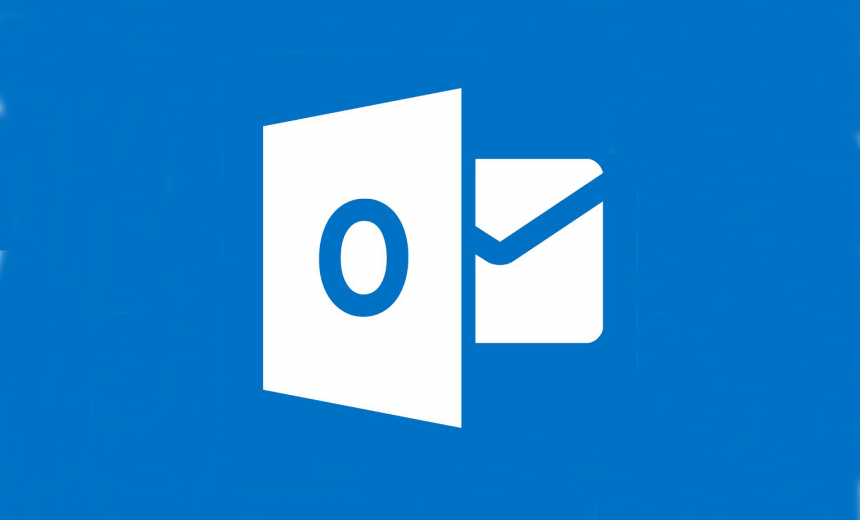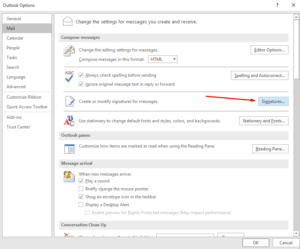How to Backup and Import Email Signatures in Outlook 2016 Profiles

If you are working with Outlook 2019, I recommend reading my updated article.
For various reasons, I work on a lot of different computers and have a need for an Outlook profile on multiple computers. Because of this, sometimes I have a need to backup and import email signatures in Outlook 2016 from one computer to another so that I don’t have to manually create the signatures. It also helps me avoid copying and pasting signatures from one computer to another while I am connected using Remote Desktop Protocol (RDP). If I only had one or two signatures it wouldn’t be a big deal but I wear different hats and have to use multiple signatures and copying and pasting them is not very convenient. That’s not the only reason why I I have a need to backup my signatures. I don’t want to repeat the process of adding signatures to my Outlook profile every time I purchase a new computer, or wipe out my hard drive and do a fresh install, which I like to do when I install a new operating system. If you are in a similar boat, you too may have a need to backup and import your email signatures once in a while. Once you have them backed up, you can easily import them to the same, or a different, computer.
NOTE: The procedure for backing up and importing signature is the same in Outlook 2013 and Outlook 2016.
Backing Up Your Email Signatures
Before you wipe your Outlook profile, in situations where you are replacing your old computer, make sure you backup your email signatures first by copying them from the APPDATA folder in your profile in Windows Explorer (called File Explorer in Windows 8/8.1). APPDATA folder is a hidden folder and instead of showing you where it’s located and how to unhide the folder, I am going to show you a much simpler way to get to it. Either type the following in the Start, Run box or in the Windows search box in Windows 7/8/8.1/10 to quickly get to the APPDATA folder:
%APPDATA%\Microsoft\Signatures
Let’s say you want to backup all your signature for future use in a folder called C:\Backup\Email Signatures. Copy all the files and the folders in the %APPDATA%\Microsoft\Signatures folder to C:\Backup\Email Signatures. You can also back them to your OneDrive, to another computer, or to a USB flash drive. Don’t forget to back up all the associated folders. In addition to the folders, there are three files for each email signature:
- An HTML Document (.htm)
- Rich Text File (.rtf)
- Text Document (.txt)
If you are unsure, back up every single file and folder in the Signatures folder and you will have a complete backup of all your signatures. If you ever make changes to the signatures, just go back and repeat these steps to have an updated backup.
Importing Signatures to Another Computer
To import them on another computer, simply copy all the signature files and folders from the C:\Backup\Email Signatures where you originally copied them and then copy them to the %APPDATA%\Microsoft\Signatures folder on the destination computer. Depending on the operating system and the method you are using to copy from one computer to another, you may get an access denied message. If you run into that situation, use the following trick to copy the files. Rather than copy and paste in an RDP session, map a drive to the other computer and copy and paste it in a newly created folder (e.g. Temp) on the destination computer. This will ensure that you have the proper permissions on that Temp folder. Once the files are copied, go to the destination computer and copy the signature files and folders from the Temp folder to the %APPDATA%\Microsoft\Signatures folder. You should be able to copy them on the same computer without getting the access denied message. If you are unable to, or don’t know how to map a drive between two computers, use a USB flash drive to copy the files from the source to the destination computer.
As far as importing the signatures, that’s all there is to it. Go to Outlook on your destination computer and you should see all your signatures. Although not, required, there is one final step that I recommend you take and that is to update your signatures if you are copying your signatures from a previous version of Outlook, such as Outlook 2013, to a new version such as Outlook 2016.
Update Old Signatures
In Outlook 2013, Microsoft recommended that you update the signatures you’ve created in older versions of Outlook (e.g. Outlook 2010) so that they use updated HTML code that uses cascading style sheets (CSS). This ensured that you won’t experience any potential problems when switching or deleting signatures in a message. I would recommend updating the signatures because it only takes a few seconds. Here’s the procedure.
- You can get to the signatures area either by composing a new message and on the Message tab going to the signatures in the Include section, or by going through the Outlook’s Options. Either way you will end up in the Signatures and Stationary window. Let’s go through the Outlook’s Options.
- In Outlook 2016, click the File tab.
- Click Options.
- Click Mail.
- Under the Compose messages section, click Signatures.

- In the Signatures and Stationery screen, select a signature in the Select signature to edit list.
- Click anywhere in the Edit signature box where your signature is, and then click Save. If you don’t click in the Edit signature area your option to select Save will be grayed out.
- Repeat these steps for each signature.
- Click OK twice to close all the windows.
- All your old signatures are now updated.
Related Articles
Copyright © 2016 SeattlePro Enterprises, LLC. All rights reserved.



Thank you – will be trying it out immediately. We have networked computers and I occasionally have to switch workstations at a moments notice. I use my signatures as templates for business letters and most have standard messages or instructions that I do not want to redo/remember each time I am sending out these daily function-type emails.
EXCELLENT! Worked like a charm – Thanks so much!